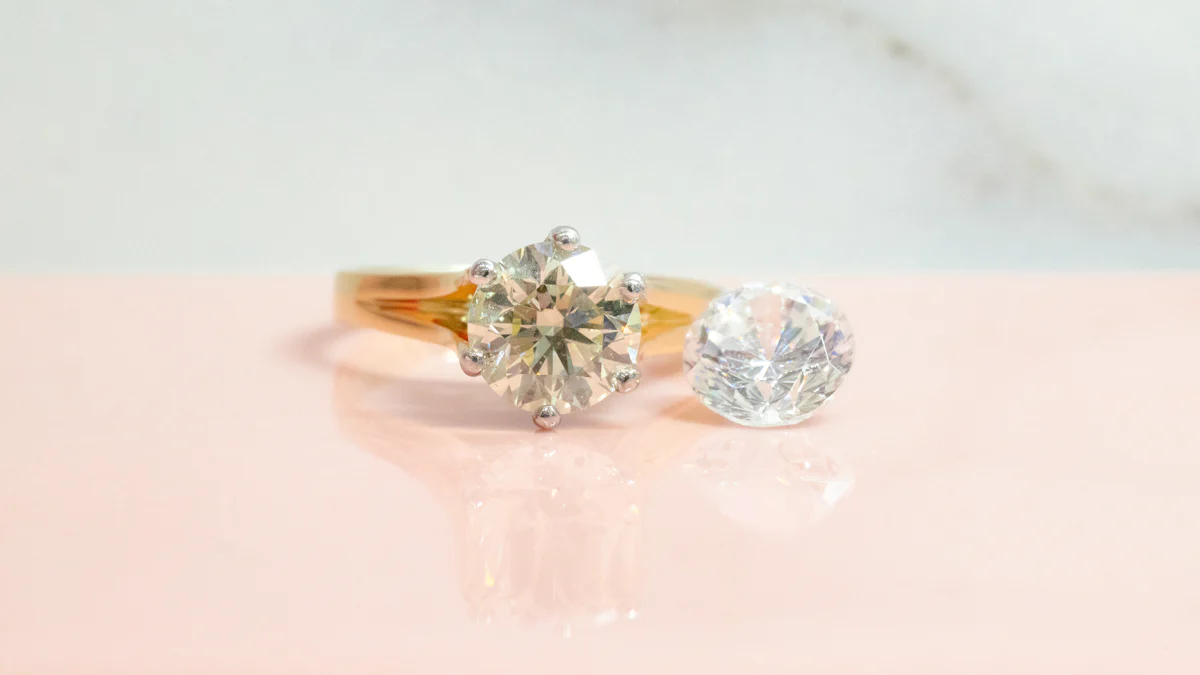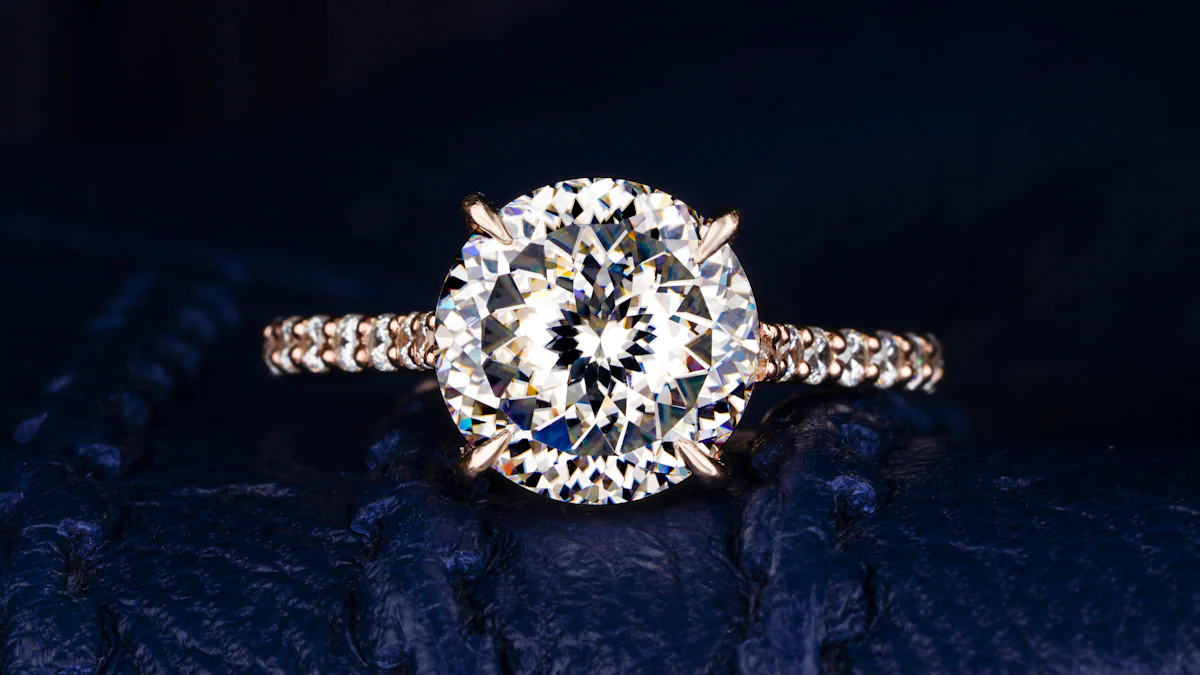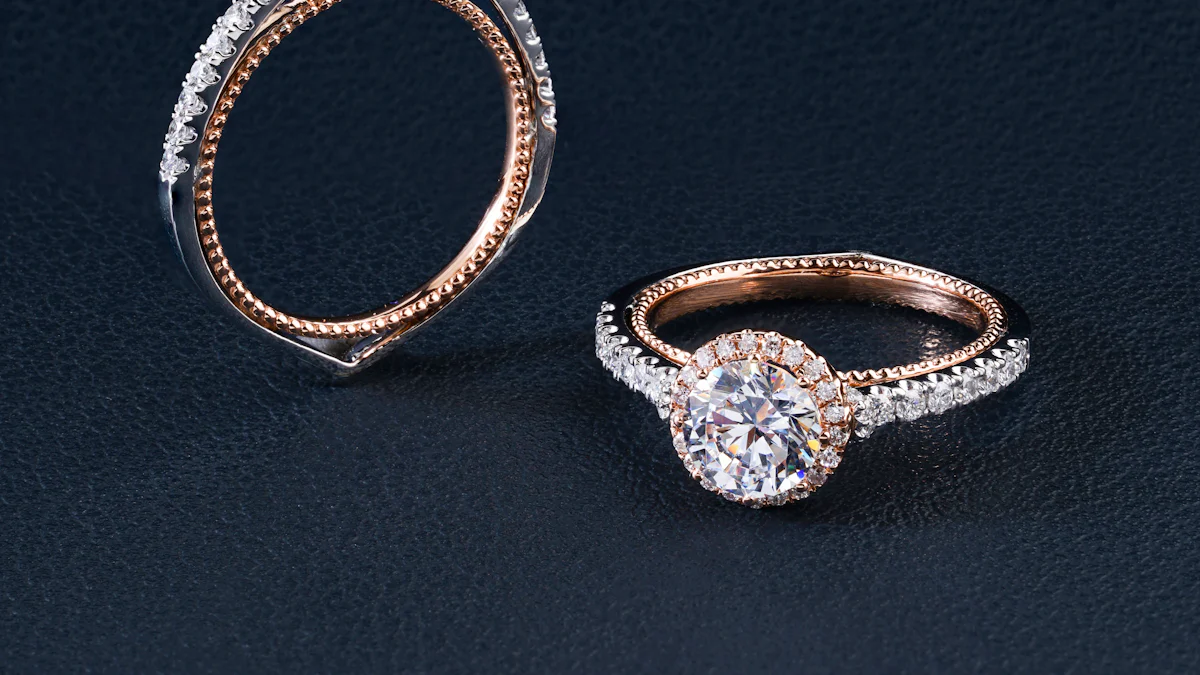Top 3 Reasons Real Diamonds Stand Out

Real diamonds captivate you with their natural beauty and extraordinary origin. These gems form deep within the Earth’s mantle, enduring billions of years of intense heat and pressure. Each diamond represents a unique journey, where carbon atoms bond in a crystalline structure, creating one of the hardest materials on Earth. Unlike lab-created alternatives, real diamonds carry a sense of rarity and authenticity that no machine can replicate. Their timeless allure and enduring value make them more than just gemstones—they’re pieces of Earth’s history, crafted by nature itself.
Key Takeaways
- Real diamonds are formed over billions of years deep within the Earth, making each one a unique piece of natural history. The rarity of real diamonds enhances their value; they are finite resources that cannot be replicated like synthetic diamonds.
- Owning a real diamond is not just about beauty; it symbolizes love, commitment, and emotional significance that lasts for generations. Owning a real diamond is not just about beauty; it symbolizes love, commitment, and emotional significance that lasts for generations. smart investment compared to synthetic alternatives that depreciate.
- Choosing a real diamond means investing in authenticity and exclusivity, connecting you to a rich tradition and heritage.
- Real diamonds carry unique inclusions and imperfections that tell their individual stories, unlike the uniformity of lab-created stones.
Real Diamonds Are Naturally Formed Over Billions of Years

The Unique Formation Process of Real Diamonds
Real diamonds are born deep within the Earth, where extreme heat and pressure transform carbon atoms into dazzling crystals. This process takes billions of years, making each diamond a true masterpiece of nature. You’re not just holding a gemstone; you’re holding a piece of Earth’s ancient history. Unlike synthetic diamonds, which are created in labs over weeks or months, real diamonds carry the weight of time and the power of natural forces.
Think about it—these gems form more than 100 miles beneath the Earth’s surface. Volcanic eruptions then bring them closer to where we can find them. This journey is nothing short of extraordinary. Each diamond’s unique inclusions and imperfections tell the story of its formation, making no two diamonds exactly alike. When you choose a real diamond, you’re choosing something that’s as unique as your own story.
The Emotional and Historical Significance of Natural Diamonds
Real diamonds have been cherished for thousands of years. They’ve symbolized love, power, and success across cultures and generations. When you wear a real diamond, you’re connecting with a tradition that dates back to 2500 BCE, when diamonds were first discovered in India. Back then, they were seen as symbols of wealth and status, traded among royalty and the elite.
Over time, diamonds became more accessible, but their emotional value never faded. They’ve become the ultimate symbol of love and commitment, often marking life’s most significant moments—engagements, anniversaries, and milestones. Owning a real diamond isn’t just about its beauty; it’s about the meaning it carries. For example, the famous Hope Diamond, which is over a billion years old, represents not just rarity but also a deep connection to Earth’s history.
When you choose a real diamond, you’re not just buying a gem. You’re investing in a piece of history, a symbol of enduring love, and a treasure that holds emotional significance for generations to come.
Real Diamonds Are Unmatched in Rarity

The Scarcity of Real Diamonds
You’ve probably heard the phrase “one in a million,” but when it comes to real diamonds, that’s an understatement. These natural treasures are incredibly rare because they form under very specific conditions deep within the Earth. It takes billions of years for carbon atoms to crystallize into diamonds, and even then, only a fraction of these formations make it to the surface through volcanic activity. This rarity makes real diamonds a finite resource, unlike lab-created diamonds, which can be produced endlessly in controlled environments.
Think about it—every real diamond you see is part of a limited supply. Mining companies search vast areas of land to uncover just a few carats of gem-quality diamonds. This scarcity isn’t just about numbers; it’s about the effort and time it takes to find these natural wonders. When you own a real diamond, you’re holding something truly exceptional, a piece of Earth that’s as rare as it is beautiful.
Why Rarity Enhances the Value of Real Diamonds
Rarity doesn’t just make real diamonds special; it also makes them valuable. The limited supply of natural diamonds creates high demand, especially for stones with exceptional clarity, color, and size. Unlike synthetic diamonds, which can flood the market and lose value over time, real diamonds maintain their worth because of their unique origin and scarcity.
Owning a real diamond is like owning a masterpiece. Its value isn’t just monetary; it’s emotional and symbolic. You’re not just buying a gem—you’re investing in something that holds its value and significance for generations. For example, many natural diamonds increase in value over time, especially as mining becomes more challenging and resources become scarcer. This makes them not only a beautiful choice but also a smart one.
When you choose a real diamond, you’re choosing more than a sparkling stone. You’re choosing a rare piece of Earth’s history, a symbol of enduring value, and a treasure that stands apart in a world of mass production.
Real Diamonds Hold Their Value Over Time
The Investment Potential of Real Diamonds
But have you ever considered real diamonds as a smart investment? These natural gems don’t just sparkle; they hold their value and often appreciate over time.
Millennial women, for example, increasingly view diamond jewelry as more than just an accessory. A recent survey revealed that three in four millennial women see diamond jewelry as an investment in themselves. Among high-earning millennial women, this belief skyrockets, with 94% considering it a long-term investment. This trend highlights how real diamonds are not only beautiful but also practical for those looking to combine elegance with financial foresight.
Owning a real diamond is like owning a piece of history that grows in significance. As mining becomes more challenging and resources dwindle, the value of these natural treasures continues to rise. Whether you’re buying a diamond for a special occasion or as a future asset, you’re making a choice that stands the test of time.
Why Synthetic Diamonds Depreciate in Value
Because synthetic diamonds can be mass-produced, their supply is virtually unlimited. This abundance drives down their market value, making them a poor choice for long-term investment. Real diamonds hold their value because of their unique formation and limited availability.
Think about it this way: would you rather own something rare and irreplaceable or something that can be replicated endlessly? Real diamonds carry a sense of exclusivity that synthetic diamonds simply can’t match. Over time, synthetic diamonds tend to lose their appeal and resale value. In contrast, real diamonds maintain their worth because of their unique formation and limited availability.
When you choose a real diamond, you’re not just buying a gemstone. You’re investing in something that holds its value, both emotionally and financially. Synthetic diamonds might save you money upfront, but they can’t offer the same enduring significance or market stability. Real diamonds, on the other hand, remain a symbol of lasting value and authenticity.
Real diamonds shine in ways that go beyond their sparkle. Their natural formation over billions of years makes them a rare and irreplaceable treasure. Unlike synthetic diamonds, which are mass-produced, real diamonds carry an authenticity that connects you to Earth’s history. They hold sentimental value, symbolizing love, commitment, and timeless beauty. Choosing a real diamond means investing in something that retains its worth and emotional significance. It’s not just a gemstone; it’s a piece of nature’s art, a lasting reminder of life’s most meaningful moments.
FAQ
Do lab-grown diamonds test as real diamonds?
Yes, lab-grown diamonds test as real diamonds. They share the same chemical, physical, and optical properties as natural diamonds. The key difference lies in their origin. Lab-grown diamonds are created in controlled environments, while natural diamonds form deep within the Earth over billions of years. Both are made of pure carbon, so even professional diamond testers recognize them as real.
Are lab-created diamonds considered real?
Absolutely. Lab-created diamonds are real diamonds. They consist of the same material as natural diamonds and exhibit identical characteristics. The only distinction is their formation process. While natural diamonds are a product of Earth's natural forces, lab-created diamonds are crafted using advanced technology in laboratories.
How can you tell the difference between real and synthetic diamonds?
To the naked eye, it’s nearly impossible to distinguish between real and synthetic diamonds. Even experts rely on specialized equipment to detect subtle differences. Synthetic diamonds often lack the unique inclusions and imperfections found in natural diamonds, which tell the story of their formation deep within the Earth.
Do synthetic gemstones have the same properties as natural ones?
Yes, synthetic gemstones, including lab-grown diamonds, share the exact same chemical and physical properties as their natural counterparts. For instance, lab-grown sapphires and diamonds are virtually indistinguishable from natural ones in terms of composition and appearance. However, their origin sets them apart.
Why do real diamonds hold more value than synthetic ones?
Real diamonds hold more value due to their rarity and natural origin. They form over billions of years under specific conditions, making them finite and unique. Synthetic diamonds, on the other hand, can be mass-produced, which reduces their market value. Real diamonds also carry emotional and historical significance, enhancing their worth.
Are lab-grown diamonds environmentally friendly?
Lab-grown diamonds are often marketed as a more environmentally friendly option compared to mined diamonds. Their production typically has a smaller ecological footprint since it avoids large-scale mining. However, the energy-intensive processes used in labs can still impact the environment, depending on the energy source.
Can lab-grown diamonds appreciate in value?
Lab-grown diamonds generally do not appreciate in value over time. Their ability to be mass-produced limits their rarity, which directly affects their market demand. In contrast, real diamonds often retain or even increase in value due to their natural scarcity and enduring appeal.
Do real diamonds have unique imperfections?
Yes, real diamonds often feature unique inclusions and imperfections that reflect their natural formation process. These characteristics make each diamond one-of-a-kind. Synthetic diamonds, created in controlled environments, usually lack these natural imperfections, giving them a more uniform appearance.
Are real diamonds ethically sourced?
Many real diamonds today are ethically sourced through initiatives like the Kimberley Process, which aims to prevent conflict diamonds from entering the market. When purchasing a real diamond, you can request certification to ensure it meets ethical and sustainable standards.
Why choose a real diamond over a synthetic one?
Choosing a real diamond means owning a piece of Earth's history. Real diamonds symbolize rarity, authenticity, and timeless value. They carry emotional significance and often become cherished heirlooms. While synthetic diamonds may offer a budget-friendly alternative, they lack the unique story and enduring worth of a natural diamond.
See Also
The Unique Charm of Gold Three Diamond Rings
Exploring the Meaning Behind Three Stone Diamond Rings
Tips for Spotting Authentic Diamond Rings at Home

